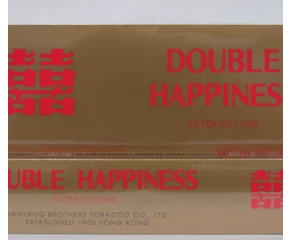Tasuki Gap Candlestick Pattern & Upside Tasuki Gap Explained

Tasuki Gap Candlestick Pattern: A Simple Guide for the General Public
When you look at stock charts, have you ever noticed gaps in prices? These gaps can speak volumes to traders, and one powerful clue among them is the tasuki gap candlestick pattern. It’s like a trail of breadcrumbs showing where the market might head next. Today, let’s explore this fascinating pattern, unpack the meaning of the upside tasuki gap, and tie it into modern tools like algorithmic trading software price considerations. Ready to uncover this secret of chart analysis?
Understand the tasuki gap candlestick pattern, upside tasuki gap, and how algorithmic trading software price affects trading decisions today.
What is the Tasuki Gap Pattern?
The tasuki gap candlestick pattern is like a signpost in the chaos of stock price movements. It forms during strong price moves and consists of three specific candles. The first two candles are in the same direction, separated by a price gap, while the third candle moves opposite but does not close the gap. This pattern hints that the trend is likely to continue rather than reverse. Think of it like a short break in a marathon runner’s pace; the runner pauses but doesn’t stop.
The History Behind Tasuki Gaps
Originating from Japanese candlestick charting—an approach developed centuries ago to interpret rice trading—the tasuki gap is part of a family of gap patterns used globally today. The term “tasuki” comes from traditional Japanese garments, referring to a folded cloth, symbolizing how the pattern weaves price action together.
Understanding the Upside Tasuki Gap
The upside tasuki gap happens in an uptrend and signals a continuation of bullish momentum. Here’s how it looks:
- First candle: A large bullish (green or white) candle.
- Second candle: Another bullish candle opens above the first, creating a gap.
- Third candle: A smaller bearish (red or black) candle pulls back into the gap but doesn’t close it.
Because the third candle fails to fill the gap, it shows buyers remain strong, and the upward trend will likely resume. It’s like a gentle pause, a slight hesitation rather than a full stop.
Downside Tasuki Gap Explained
On the flip side, the downside tasuki gap appears in a downtrend. It follows a similar three-candle structure but signals a bearish continuation:
- First candle: Large bearish candle.
- Second candle: Another bearish candle opening below the first, forming a gap.
- Third candle: A bullish candle collects some gains but does not fill the gap.
This pattern confirms sellers are still controlling the market, indicating the downtrend should continue.
How the Tasuki Gap Forms on Charts
The pattern forms over three candles in sequence. Imagine driving on a road and suddenly hitting a pothole (the gap) but then quickly recovering without stopping (third candle not closing the gap). This price gap acts as a form of support in an upside tasuki gap or resistance in a downside one, often attracting buyers or sellers back into the market.
Why Are Tasuki Gaps Important?
Tasuki gaps help traders anticipate if a trend is likely to keep moving in its current direction – a crucial insight for anyone trading stocks or other assets. They provide clues about momentum strength and potential price support or resistance levels. This gives traders a better shot at making informed decisions, potentially riding a good wave longer.
Tasuki Gap vs Other Gap Patterns
Not all gaps are created equal. Compared to other common gap patterns, the tasuki gap is unique because it features a partial fill attempt but preserves the overall gap direction as a sign of strength. Other gaps might be quickly closed, signaling exhaustion or reversals, but the tasuki gap maintains trend confidence.
Trading Strategies Using Tasuki Gap
Here’s a simple analogy: imagine a runner who slows just a bit but doesn’t stop; a tasuki gap signals exactly that in a market. Traders use it to:
- Confirm to buy during uptrends when the upside tasuki gap appears.
- Confirm to sell or short during downtrends with a downside tasuki gap.
- Set stop-loss levels around the gap zone for risk control.
- Combine it with volume and other indicators for better accuracy.
The real power is in confirmation rather than prediction.
The Role of Volume in Tasuki Gap Patterns
Volume plays a supporting role. A high volume confirming an upside tasuki gap signals genuine buying interest, whereas low volume during the third candle might suggest weak selling pressure. Think of volume as the background cheer or silence during a race; it tells us how committed the participants are.
How Algorithmic Trading Uses Tasuki Gaps
Modern trading increasingly uses algorithms that scan for patterns including tasuki gaps. Algorithmic trading software can detect these patterns instantly, allowing traders to automate buy/sell decisions based on them. This helps overcome human emotion and speed limitations in fast markets.
The Cost of Algorithmic Trading Software
Prices for algo trading software vary widely, depending on features and complexity:
- Entry-level platforms start around ₹1,000 per month and offer basic backtesting and execution.
- Professional-grade software can cost lakhs per year with ultra-low latency and full customization.
- Some tools have free versions for beginners to experiment.
Choosing the Right Algo Trading Software
When picking software, consider:
- Your technical skills (coding needed or not?)
- Supported brokers and markets
- Backtesting abilities
- Budget constraints
- Customer support and training options
A good algo platform should fit your style like a custom-tailored suit, not a one-size-fits-all solution.
Real-Life Examples of Tasuki Gap Trades
Imagine a stock surging significantly one day, opening higher next day, but the late-day small pullback doesn’t erase the gap, suggesting buyers remain strong. Traders spotting this upside tasuki gap might add positions, riding the ongoing rally for gains. Conversely, traders might short in a downside tasuki gap during a falling market.
Common Mistakes to Avoid with Tasuki Gaps
- Mistaking other gaps for tasuki gaps without confirming candle colors or gap positions.
- Ignoring volume or context in broader market trends.
- Over-relying on tasuki gaps without other technical confirmations can lead to false signals.
Conclusion
The tasuki gap candlestick pattern is a handy tool in the trader’s kit to read the market’s pulse, especially when it comes to spotting trend continuations. Whether you spot an upside tasuki gap or its downside counterpart, understanding this pattern can help you make smarter trading calls. And when combined with modern algorithmic trading software, these patterns move from theory to real-time action. So next time you see a peculiar gap on your chart, remember it might just be the market giving you a cheeky wink.
FAQs about Tasuki Gap Candlestick Pattern
1. What exactly is an upside tasuki gap?
An upside tasuki gap is a three-candle bullish continuation pattern signaling that an uptrend will likely continue after a brief pullback.
2. How does a downside tasuki gap differ from the upside version?
The downside tasuki gap signals bearish continuation in a downtrend with a gap down and a partial fill that does not close the gap fully.
3. Can algorithmic trading software detect tasuki gap patterns?
Yes, many algorithmic trading platforms are programmed to scan and act on tasuki gap candlestick patterns, enhancing trading speed and precision.
4. Is the tasuki gap pattern reliable for trading decisions?
While it provides useful signals for trend continuation, it’s best combined with volume analysis and other indicators for better accuracy.
5. What factors influence the algorithmic trading software price?
Pricing depends on features, broker integrations, latency, customization capability, and professional support, varying from free to lakhs in cost.




